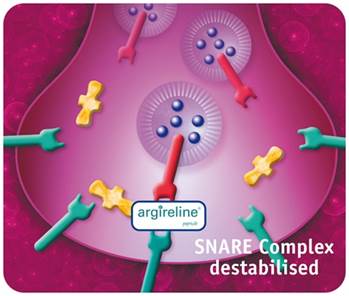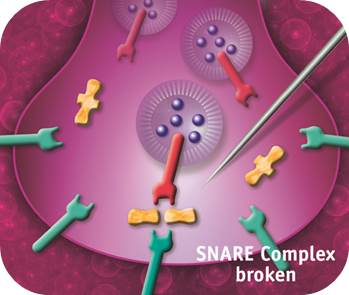No products in the cart.
EXPRESSION WRINKLES REDUCER
FREQUENTLY ASKED QUESTIONS
________
____
Expression wrinkles are a particular type of wrinkles linked to repeated muscular contractions and they usually appear as soon as the age of 30.
Typical expression wrinkles appear especially in the top half of the face: crows feet, horizontal frown lines (forehead), glabella lines etc.
Expression lines (temporary wrinkles) form in the skin during muscle contraction and disappear when facial muscles relax, providing the human face with its unique ability to express emotions.
Certain intrinsic and extrinsic factors such as age, UV exposure, hormonal changes, smoking, accelerate the rate of wrinkling.
Muscle contraction during everyday facial expression, forces the skin to fold repetitively along the same groove. With time (several years), this repeated mechanical stress causes that groove or ″temporary wrinkle″ to etch in as a permanent wrinkle. To explain this phenomenon the theory of ″the old glove″ model for wrinkle formation has been proposed.
″Smooth when new, the fabric develops grooves at sites of long-sustained stress″.
It has been scientifically determined that temporary wrinkles formed by facial expressions eventually evolve into permanent wrinkles.
Therefore, those who form more wrinkles due to facial expression at any given age will tend to form more wrinkles that are permanent at a later age following each person’s unique pattern.
One of the main concerns amongst the majority of the population is avoiding the first and visible signs of aging.
Individuals wish to maintain their youthful looks and appearance as long as possible.
Expression wrinkles are a particular type linked to repeated muscular contractions and the first usually as soon as at the age of 30.
Attenuating the muscle contraction is the most reliable approach to delay the appearance of expression wrinkles as much as possible. This can be achieved either by using topical actives in the form of cosmetic topical products or neurotoxins in the form of injectable products.
Neurotoxins such as Botulinium toxin type A (Botox ®) works by stopping your muscles from contracting which stops your skin from moving. Of course, these are temporary treatments and need to be repeated every 3-4 months.
On the other hand, cosmetic actives such as Neurotransmitter-inhibiting peptides, which are the most recent cosmeceutical peptides, are safe, cheaper and milder alternatives to Botulinium Toxin, targeting the same wrinkle-formation mechanism in a very different way. In addition, unlike the injected alternatives, Argireline® is easily absorbed into the skin using topical products making it a much easier product to use at home. Lastly, Expression Wrinkles Reducer product is cost effective.
Expression Wrinkles Reducer contains 10% ARGIRELINE ® which is the correct concentration to be used in a cosmetic product for optimum efficacy and safety.
Expression Wrinkles Reducer monodose ampoules unlike other products are sealed capsules in order to ensure their freshness and to maintain their effectiveness until the time of use.
Expression Wrinkles Reducer monodose ampoules is formulated without parabens in order to minimize the risk of allergy and additionally its serum texture helps to hydrate and provide a silky effect on the skin.
Expression Wrinkles Reducer monodose ampoules can be used by both men and women and is suitable for all skin types.
Additionally, it covers the needs of every skin type as wrinkles appear during various ages.
In your 30s, Expression Wrinkles Reducer will effectively improve or prevent the appearance of first expression wrinkles especially those that appear on the forehead and around the eyes.
In your 40s, it will help to reduce expression wrinkles as well as furrows and deep lines substantially induced by repeated facial movements.
People in their 40s show a significantly faster rate of wrinkling compared with all other age groups. Therefore, it is significant that people in their 40s use the Expression Wrinkles Reducer on a regular basis.
Furthermore, women entering menopause show the highest rate of wrinkling. This suggests that the change in hormonal status, rather than age per se, is the important determinant in accentuating wrinkling.
On the contrary, postmenopausal women (50s and 60s) have a very low rate of wrinkling.
In your 50s and over, Expression Wrinkles Reducer will help to ameliorate and reduce the appearance of expression wrinkles that have become persistent or permanent.
Expression Wrinkles Reducer monodose ampoules main active ingredient is ARGIRELINE® (10% concentration) which is the optimum in order for the product to be effective, safe and free from any side effects.
If the concentration of Argireline® were lower, the product would have been less effective. On the other hand, higher concentrations are not recommended since all clinical studies have been conducted using a 10% concentration.
Furthermore, Expression Wrinkles Reducer has been formulated without parabens in order to minimize the risk of allergy.
Finally, until today, no negative side effects have been reported in the international bibliography and ARGIRELINE® has been in use for over 15 years (since 2002) without any reported side effects and is known as the first peptide in use to counteract expression wrinkles.
Expression Wrinkles Reducer monodose ampoules have been formulated not only to effectively reduce the appearance of expression wrinkles but additionally this 10% ARGIRELINE® moisturizing serum also offers total hydration to provide smooth and silky skin.
This is of utmost importance since keeping the skin well hydrated can preserve its youthful elasticity to better withstand mechanical stress and therefore minimize the formation of temporary wrinkles during facial expressions. Thus, the potential of creating persistent and permanent wrinkles is decreased.
In conclusion, you can use other moisturizers only if needed, but you must use sunscreens daily in order to prevent ageing and aggravate expression wrinkles.
Also, use RETINOL+ at night to prevent or diminish wrinkles as well as any other necessary product after consulting an expert.
While cumulative sun exposure is considered to play the most important role in the progression of facial wrinkling, the role facial expressions play such as smiling and frowning, on facial wrinkles have been overlooked until recently.
Anytime you make a facial expression, whether you smile or frown, movement is caused in underlying facial muscles, which will form a groove or a line perpendicular to the movement. These wrinkles can be either temporary (expression lines) or persistent (permanent wrinkles).
Expression lines form in the skin during muscle contraction and disappear when the facial muscles relax providing the human face with its unique ability to express emotions.
On the other hand, persistent wrinkles are visible even when the muscles are at rest and do not contract.
Your unique pattern of expression lines will predict the pattern of your potential persistent wrinkles along with other factors such as age, UV exposure, and skin type etc. All these factors influence the rate of facial wrinkling.
The question that arises is should you stop smiling in order to prevent wrinkles?
The answer is NO, because by suppressing a smile it also means suppressing emotions that express and possibly enhance your well-being.
In addition, in order to prevent wrinkling you would not only have to suppress smiling but also virtually every facial expression. This would leave you looking emotionless and might even affect your ability to feel emotions.


Expression wrinkles are the kind of skin wrinkles that result from the repeated contraction of facial muscles.
Muscle contraction involves neuron-to-muscle signalling at the neuromuscular junction (NMJ).
At the pre-synaptic nerve terminal whereas neurotransmitters are released and at the muscle fibres whereas neurotransmitters bind to receptors triggering muscle contraction. The release of neurotransmitters requires the formation of a specific complex called SNARE complex.
ARGIRELINE® peptide, which is a biotechnology product that is created by combinational chemistry and high production techniques, acts within the pre-synaptic mechanism to reduce muscle contraction that leads to the formation of wrinkles.
ARGIRELINE® peptide is a replica of the N-terminal end of SNAP-25, which competes with this natural protein for a position in the SNARE complex, destabilizing the formation without breaking any of its components.
Consequently, muscle contraction is reduced substantially and the muscle is relaxed rather than paralyzed, reducing wrinkle formation and minimizing the depth, volume and length of existing wrinkles and expression lines.
ARGIRELINE® peptide targets the same protein complex as Botulinium Toxin Type A (BOTOX®), but unlike ARGIRELINE, BOTOX® causes a specific proteolysis of SNAP-25 that results in muscle paralysis.
Thus, ARGIRELINE® is a safe product with proven activity and efficacy and an excellent anti-wrinkle agent that reduces muscle contraction and expression lines.
A large number of articles, scientific studies, including clinical studies (double blind, placebo (vehicle)-controlled) were published proving the efficacy of ARGIRELINE® in reducing the appearance of expression wrinkles as well as in improving the histological structure of skin tissue and rejuvenation of ageing skin.
A brief list of such studies follows:
Blanes-Mira et al. A synthetic hexapeptide (Argireline) with anti-wrinkle activity. Intern. J. Cosmet. Sci., 2002, 24, 303-310
Ruiz M.A. et al. Evaluation of the anti-wrinkle efficacy of cosmetic formulations with an anti-aging peptide (Argireline®) Ars Pharm, 2010, Vol.50 nº 4 ; 168-176
Husein Husein el Hadmed, MD et al. Cosmeceuticals: peptides, proteins, and growth factors. J. Cosmet. Derm., 15, 514-519
Beata Lubkowska et al. The use of synthetic polypeptides in cosmetics. 74-81/2010 Copernican Letters® Vol 1
K Fields, MD et al. Bioactive peptides: signalling the future. 2009 Wiley Periodicals, Inc. J.Cosmet.Derm., 8, 8-13
Lijuan Zhang, PhD et al. Cosmecauticals and peptides. Clin. Derm. (2009) 27, 485-494
Eleanor J. Bradley et al. Over-the-counter anti-ageing topical agents and their ability to protect and repair photoaged skin. Maturitas 80 (2015) 265-272
Gorouhi et al. Role of topical peptides in preventing or treating aged skin. Int. J. Cosmet.Sci., 2009, 31, 327-345
Tomonobu Ezure et al. The severity of wrinkling at the forehead is related to the degree of ptosis of the upper eyelid. Skin Res.Techn. 2010, 16, 202-209
Yusuke Hara et al. Involvement of Stratum Corneum in Initial Residual Wrinkle Formation Induced by Facial Expression. IFSCC Magazine 1 ,2017, 15-22
Osamu Kuwazuru et al. Skin wrinkling morphology changes suddenly in the early 30s. Skin Res.Techn. 2012, 18, 495-503
Alberto Goldman et al. Facial rejuvenation for middle-aged women: a combined approach with minimally invasive procedures. Clin. Interv. Aging 2010:5, 293-299
Emma C. Paes, MD et al. Perioral Wrinkles: Histologic Differences between Men and Women. Aesth. Surg. J. volume 29 number 6 November/December 2009, 467-472
Wang Y et al. The anti-wrinkle efficacy of Argireline. J Cosmet Laser Ther. 2013 Aug. 15(4) 237-41
Wang Y et al. The anti-wrinkle efficacy of synthetic hexapeptide (Argireline) in Chinese Subjects. J Cosmet Laser Ther. 2013 Apr 22
YOUR PROBLEM WAS NOT SOLVED?
________
____
SEND US AN EMAIL
If you have any questions concerning our products or any other subject, please do not hesitate to contact us
SKINCARE ADVICE
We offer an innovative approach to skin treatment not only to minimize premature ageing but also to improve your skin’s condition
VISIT US
Visit us to learn more about our revolutionary approach to skin treatment and how it can enhance your skin’s beauty

